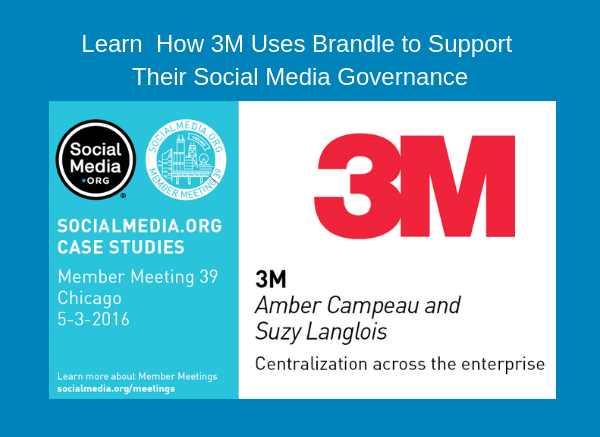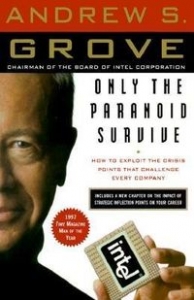 Dear Big Retail CMO, is Social coming between you and your stores?
Dear Big Retail CMO, is Social coming between you and your stores?
Does it feel like employees are reading from a different social play book...working at cross purposes?
As the CMO, you probably see social as something best left to the team at HQ to communicate the big brand messages. You may even consider social media at the store level as something unruly, that "doesn't move the needle," and which brings unwanted brand risk. However, your store managers probably look at it differently. From their point of view they are responsible for driving sales to their stores and who knows your local customers better than the local team? So, your store managers probably see social media as something which can "move the needle" for their store.
While the brand's social channels help build awareness and supports the stores collectively, the messages are generally broad and may not reflect the conditions which may be unique to a particular store or region. Consider the differences in clothing or food purchases between Key West, Kansas City, and Seattle! Thus, some employees feel the need to create one or more social points of presence for their store even if corporate has a policy prohibiting it. As a result, you may feel trapped in a game of "whack-a-mole" searching out and shutting down unauthorized social presence in an effort to preserve brand consistency, limit brand fragmentation and preclude the sharing of any "rogue" content. If so, you're not alone.
However, with corporate and local working at cross purposes like this your enterprise is missing a significant opportunity to align your common interests and improve everyone's profitability.
As an example of an enterprise that is getting much of this right, consider Whole Foods Market. They have over 815 social accounts representing both corporate brands and local stores under the direction of Natanya Anderson, their Director of Social Media and Digital Marketing. At the Blogwell conference in Santa Clara this past August, she gave what I consider to be a "must see" presentation called "Brand + Local Social: Creating Balance in the Customer Experience." In this presentation, Anderson highlights how Whole Foods integrates infrastructure, training, and regional support with content and community management. This creates a successful ecosystem that represents both brand and local quite successfully.
However, don't go rushing off implementing new systems, tools and training just yet! We need to start with something more fundamental – your culture! Becoming an effective social business that "moves the needle" requires embracing change which might not feel too comfortable at first. A successful culture shift starts in the C-suite, loosens "command and control," weaves social throughout the organization and empowers employees to act with some autonomy.
Did I see you shaking your head as you read that last sentence? If so, don't give up now and read on. Help is at hand.
One of the best ways to embark on this transformation is to tap into the expertise of those who have been down this road before. In my opinion, two good choices are Richard Binhammer, who honed his skills during Dell's transition into a social business, and the team at SideraWorks: Matt Ridings and Amber Naslund. As Natanya Anderson says "Culture eats strategy for lunch," so bringing in some expert assistance at the beginning will help you sleep better at night knowing you're benefitting from their years of experience in establishing your cultural foundation.
Once you have embraced the cultural shift, your next step is putting in place some infrastructure to manage and monitor your inventory of social presence. (Disclosure, this is why we created the Brandle System.) Once you get handle on your actual rather than assumed social footprint, you can decide which points of presence you want to keep and invest the time to make them compliant to brand and regulatory standards.
This is also a good time to institute a social listening program with a system like Radian6, now part of the Salesforce Marketing Cloud, to hear what is being said about your business. If you are in the wine or food industry, consider a specialized system like Vintank which listens for when customers are talking "at you, with you or about you." Your customers are talking so don't you think you should be listening to what they are saying?
With a complete and compliant social inventory combined with a social listening platform, you are almost ready to unleash the power of your frontline employees. Assuming you've put in place some workable social guidelines, now its time to start training your employees so they are ready when they take their store's new social presence for a spin. This is where your company can not only make sure the local points of presence are put to effective use but it's also an opportunity to let your employees do what they do best – be brand advocates.
Too many companies invest millions of dollars to identify and engage "influencers" in the wild but fail to think about the value of their own employees. Who knows your company and its products better than your employees? And many have their own social networks which means they are an untapped asset. Have you stopped to consider the size of the social graph your employees represent?
Believe it or not, the company's and the employee's interests are often aligned. If you help the employee be more informed and professional this generally makes him or her more successful which in turn makes the company more successful. Everybody wins! This is where a company like Addvocate can help. Creating a collaborative environment with tools and content your employees can adapt to fit "conditions on the ground" can be very powerful.
I could write so much more but I'll stop here. Becoming a social retail business isn't all unicorns and bunny rabbits, as Natanya Anderson points out but making the investment can turn a frustrating game of "whack-a-mole" into a rewarding corporate-local-employee collaboration that "moves the needle" for all parties.








